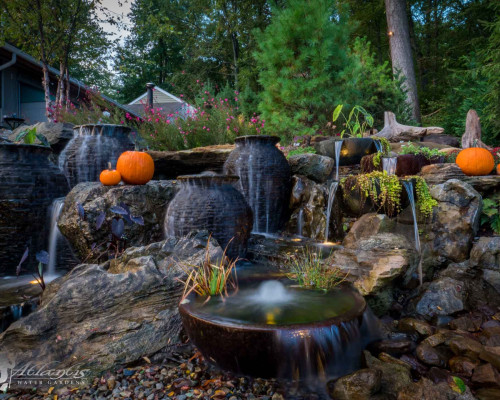
Is Your New Jersey Koi Pond Ready for Fall Preparation?
As fall approaches in New Jersey, your koi pond or water feature will require special attention to ensure it remains healthy and vibrant through the colder months. Preparing your pond for fall is crucial for maintaining water quality and the well-being of your koi. Here’s how to get your pond ready for the changing season.
1. Prepare New Jersey Koi Pond for Fall
Preparing your New Jersey koi pond for fall involves several essential steps that protect your fish and maintain the health of your water feature. From managing falling leaves to adjusting feeding routines, every aspect of your pond requires careful consideration during this transitional period.
2. Clean Out Debris and Leaves
One of the biggest challenges for pond owners in New Jersey during the fall is managing falling leaves. If left unattended, leaves can decompose in your pond, leading to poor water quality and potentially harming your koi.
- Use a Skimmer: Regularly skim the surface of the pond to remove leaves and other debris.
- Install a Pond Net: Consider covering your pond with a net to catch leaves before they enter the water.
- Trim Nearby Plants: Prune back any plants or trees that overhang your pond to reduce the number of falling leaves.
3. Check and Maintain Your Equipment
Your pond equipment needs to be in top condition to handle the cooler temperatures of fall and the freeze of winter.
- Inspect Pumps and Filters: Ensure your pumps and filters are working efficiently. Clean them out to prevent any clogs that can reduce water circulation.
- Consider a Heater: As temperatures drop, a pond heater can help keep a small area of your pond from freezing completely, ensuring that gases can escape and your fish remain healthy.
- Test Your Water Quality: Regularly check the pH, ammonia, and nitrite levels of your pond water. Fall is a good time to perform any necessary adjustments to stabilize water chemistry before winter sets in.
4. Adjust Your Feeding Routine
Koi metabolism slows down as the water temperature drops. Feeding your koi the right amount of food at the right time is crucial.
- Switch to a Fall Diet: As temperatures fall below 60°F, transition to a wheat germ-based food that’s easier for your koi to digest.
- Reduce Feeding Frequency: When water temperatures dip below 50°F, your koi’s digestion slows significantly. Feed them less frequently, and stop altogether when temperatures reach 40°F.
5. Prepare Your Plants
Aquatic plants play an essential role in maintaining a healthy pond ecosystem, but they also require special care as fall approaches.
- Trim Back Foliage: Cut back dead or dying foliage from pond plants to prevent decay in the water.
- Move Delicate Plants Indoors: If you have tropical or delicate plants, consider moving them indoors to protect them from frost.
- Add Cold-Hardy Plants: Consider adding hardy plants like water lilies that can survive through the winter and help oxygenate the water.
6. Consider a Fall Water Change
A partial water change in the fall can help refresh your pond and prepare it for the months ahead.
- Perform a Partial Water Change: Replace 10-20% of the water in your pond to remove any accumulated waste and toxins. Be sure to add a dechlorinator if using tap water.
- Clean the Pond Bottom: Use a pond vacuum or net to remove any sludge or debris that has settled at the bottom of the pond.
Conclusion
Preparing your New Jersey koi pond or water feature for fall is essential for maintaining a healthy aquatic environment. By following these steps, you’ll help ensure that your pond and koi thrive through the cooler months and emerge ready for spring.
Ready to prepare your pond for fall? contact us today at 973-627-0515 for expert advice and services tailored to your needs. for expert advice and professional pond maintenance services tailored to the New Jersey climate. Let us help you keep your pond beautiful year-round!